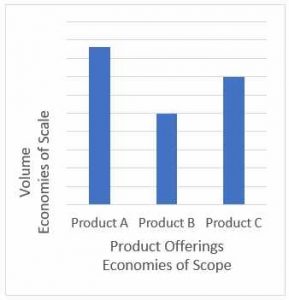I just parted ways with a client over anchor text.
They hired me to build white hat links – guest blogging, outreach, broken link building, etc.
After I landed a few on authority websites, I got an email from them regarding the link anchors:
“We are looking to dilute our anchor text profile. We hired you to build white hat links – anchor texts should ONLY contain our brand name! Anything else is manipulation and we will get penalized by Google.”
I broke off the working relationship. Don’t tell me how to do my job and I won’t call you an idiot.
On second thought, I’m glad this came up. I’ve been wanting to address this anchor text thing for a while.
Stop crapping your pants over “anchor text ratios” because you’re doing it wrong anyways.
Anchor Texts Should Be Natural, Not Planned
You probably think you’re doing a bang up job keeping your anchor text profile “safe” because you follow a strict regimen:
- 20% branded anchors
- 20% naked URLs (i.e. http://webris.org)
- 10% business owner name
- 10% generic anchors (click here, read more)
- 35% related keywords (keywords similar to your main one)
- 5% “money” keyword
Sure, you’ll get a “natural” looking profile, but don’t you see the irony?
You’re trying to build a “natural” profile by manipulating it.
 Let’s look at Google’s anchor text ratio.
Let’s look at Google’s anchor text ratio.
- 6% branded
- 6% naked URL
Almost 80% of the links use “Other Anchor Text”.
Where are these links coming from? Why are so few links branded and naked URL?
The easiest way to answer that is exploring types of links that make up your profile.
Anchor Texts Should Be Based on Link Type
Each link type has a natural anchor. My client wanted to “dilute” their profile with the wrong type of links.
Even if you’re a black hat SEO you shouldn’t have to “dilute” your anchors.
All you need to do is build links the way they’re intended.
Allow me to illustrate with some examples.
1. Profile Links
 Natural link type: branded, naked URL
Natural link type: branded, naked URL
Any website you can create a profile on, do it.
More often than not you’ll get a chance to add a link to your website. These links won’t rank you, but they’ll pad your link profile.
Profile links are a natural way to build branded and naked URL anchors.
Some might give you the opportunity to use anchors – don’t! Resist the temptation!
2. Citations, Directories, Resource Pages
Natural link type: branded, naked URL, ‘click here’
These are the Yellow Pages for our generation. With thousands across the web, they present a perfect opportunity to build basic anchor texts.
The web directory in the image to the right lists my business with a link anchored by “Visit Website”.
This is an example of when that type of anchor is used naturally – NOT in a contextual guest blog post.
3. Blog Comments
Natural link type: naked URL, your name
Arguably the most misused link by SEOs.
When was the last time you read an article on your favorite blog and saw a comment with anchored links?
It never happens! Real blogs don’t accept comments with anchor text. However, they do allow you to drop a naked URL link (if relevant) or link to your site from the name field.
Blog comments are yet another way to leverage building natural anchor profiles.
4. Contextual (Organic)
Natural link type: naked URL, brand, ‘read more’, your name, anchor
Contextual links will make up the majority of your link profile and are the links that drive rankings.
There’s really 2 types of contextual links:
- The ones you get organically because your website is awesome. These generally come from press or media sites.
- The ones you had to bust your ass for. These generally come from outreach, content submission or links built (blog networks, etc).
You have no control over organic (press) links. They’re going to link to your site however they see fit within their article.
For the most part, the link will be branded or generic (click here). Press sites use links to cite a source – if they’re sharing a case study or submitted tip they cite with a link to the source. These anchors generally end up as branded, naked or generic.

How often does your website generate organic links?
Yeah, me neither.
So, the majority of our links will come from the next type…
5. Contextual (Built + Earned)
Natural link type: anchor
Hopefully you stuck around because it’s what I’ve been building up to this whole time.
Branded and naked URL anchors from contextually built links look more like spam than exact match anchor text.
I know – bold claim, but allow me to elaborate.
My recently departed client hired me to build “white hat” contextual links through guest blogging and outreach.
So, I wrote some killer content for some of the world’s top blogs. They accepted the posts, but not the links.

And another…

I’ve NEVER had links stripped before. Ever.
Why’d they do it?
Because adding branded or naked URL links comes off as blatant promotion.
I know this. You know this. Google knows this.
This is incredibly important to pay attention to if you build black / gray hat links!
Private blog networks only work if they mimic real sites. If you’re trying to be safe by adding branded / naked URL links, you’re creating unnatural patterns.
Read any blog on the web. Look at the links. They very rarely use branded or naked anchors.
Contextual anchors should fit seamlessly with the content. This helps the flow of the article and is best practice for web writing.
Bottom line – stop creating content for built links with branded anchors. It looks like spam!
Content Type is a Factor Too
I want to push this a little further.
Utilizing link type with anchor is really only half of it. You need to make sure you’re linking to the right content on your website.
Below is a diagram showing the proper use of link type, anchor and link destination.

Image courtesy of Business Tradelines
I think it’s pretty self explanatory so I won’t go into detail on it. If you have any questions leave it in the comments or post it in our digital marketing help Facebook Group.
Closing: Proper Use of Anchor Text is Powerful
I want to wrap this up by driving home the importance of non branded anchor text.
Anchor text is a HUGE ranking signal. You need to combine the power of anchors with the power of contextual links.
I recently wrote a guest post for Ahrefs – in that post I used the anchor text “Miami based SEO agency“.

A few days later we shot up to the number two spot in Google for that keyword.
Exact match anchors aren’t spam – they’re a necessity.
(249)




